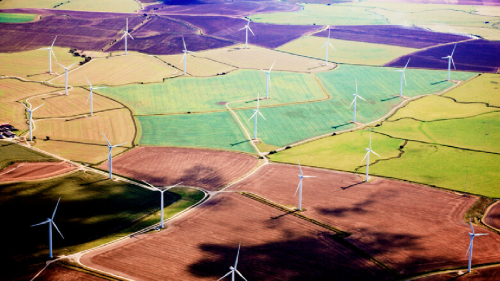ING takes next steps on energy financing after COP28
We’ve announced that we’ll phase out the financing of upstream oil and gas to zero by 2040, and aim to triple our renewable energy financing by 2025.

These are impactful actions that build on the progress made at COP28 and the most recent scientific insights and scenarios. So what does it mean? Here are some questions and answers.
Does this mean we’re exiting oil & gas completely?
No, it doesn’t. This focuses on our upstream oil and gas lending portfolio, which refers to the exploration and production of oil and gas and is a crucial part of the oil & gas value chain.
We will phase out our financing of upstream oil and gas activities by 2040, which means that by then, our lending to exploration and production of oil and gas will be reduced to zero. For midstream and downstream, which refers to oil and gas transportation and conversion into fuels, we have emissions intensity targets to reach our net zero by 2050 targets.
How is this different than what we’ve already said?
Last year, we stopped dedicated finance for new oil and gas fields and restricted financing for the related infrastructure. This already signified a reduction of our financing of upstream oil and gas activities, but now we’ve set a clear end date to bring it to zero.
Our new renewables target, which is five years ahead of the COP28 guidance, is to triple the financing of renewable power generation to €7.5 billion annually by 2025, up from €2.5 billion in 2022. It replaces the previous target of increasing renewables financing by 50% by 2025 from the €1.5 billion base in 2021.
Why are we doing this now?
We’ve been working to steer our upstream oil and gas portfolio towards the goals of the Paris Agreement since we introduced our Terra approach in 2018. To do this, we’ve used scenarios by the International Energy Agency (IEA) and committed to updating our approach in line with any new IEA scenarios. They recently published an update, adding a ‘NZE scenario for Advanced Economies’, which we have decided to follow.
But why aren’t we exiting fossil fuels completely?
Decarbonisation is vital but it must be balanced with the need for energy to remain affordable for people and companies, and the need for the energy supply to remain secure. Currently, about 80% of the energy used globally is fossil-fuel based. The world still needs some fossil fuels for things like fertilizers, chemicals, plastics and steelmaking.
Society is in the midst of transitioning to a low-carbon economy, as are our clients, and as is ING. The text in the COP28 agreement also calls for “transitioning away from fossil fuels in energy systems, in a just, orderly and equitable manner” – so not overnight. So even though we finance a lot of sustainable activities, we still finance more that’s not. That is a reflection of the current global economy, how far the world has come and still needs to go.
The best way to reduce demand for fossil fuels is to increase availability of renewable energy. The IEA stresses the critical importance of the massive build-out of renewable power generation, like wind, solar, water and geothermal. Our new renewables target supports this, and builds on the agreement made by governments at COP28 and the guidance provided by the IEA that renewable power generation must triple in capacity by 2030 to meet net-zero goals.
What about companies that are active in upstream as well as other things?
We’ll develop an approach in line with the rationale we applied for utilities companies when we announced the phasing out of coal-fired power plants in 2017. There our policy is to not finance utility clients that are over 5% reliant on coal fired power in their energy mix. We do however continue to finance non-coal energy projects for these clients in support of their energy transition.
